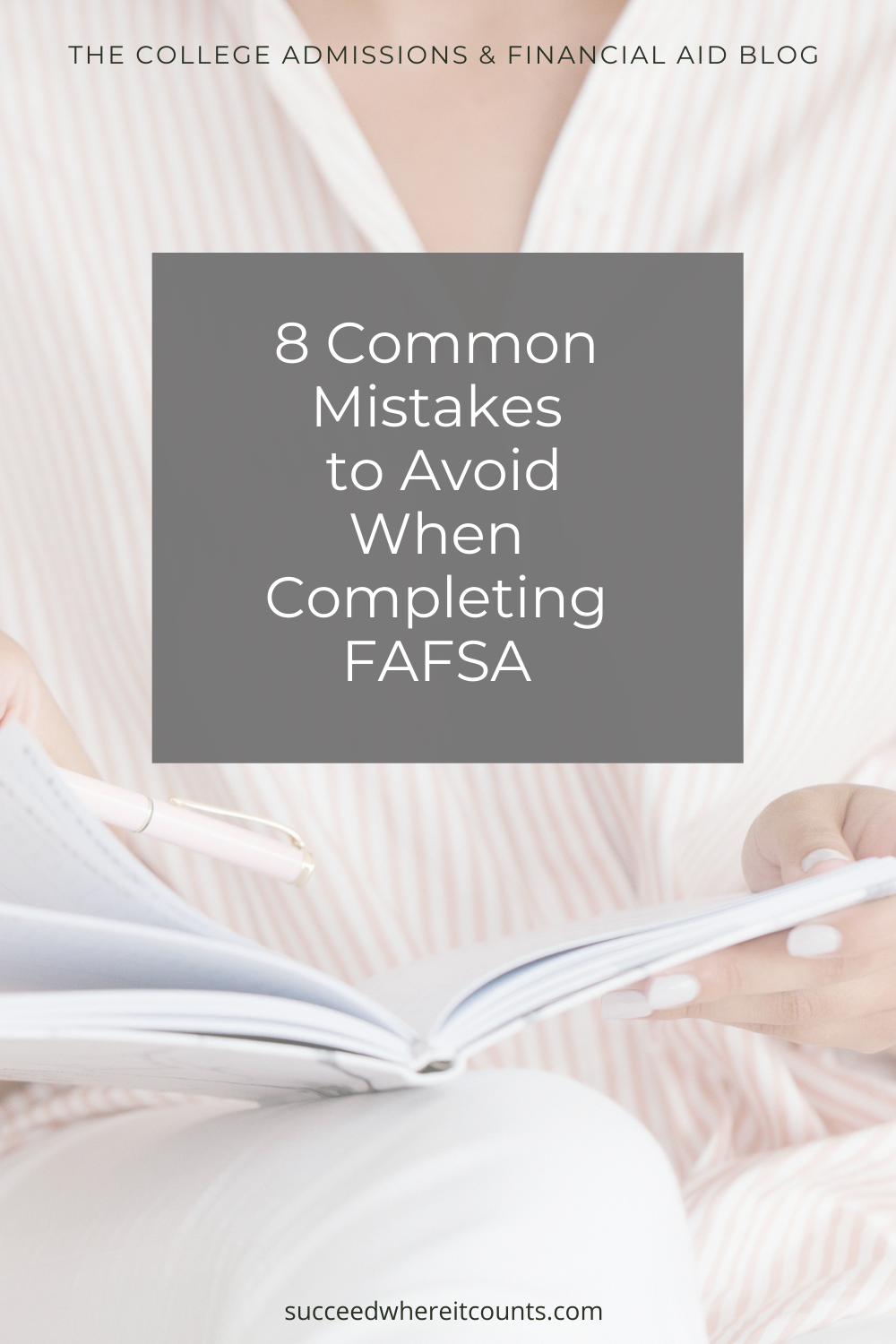December 24, 2020
Your Child and the Christmas Child
Second only to you is there someone who values and cares about your teenage children as they stand on the threshold of their adult lives, backs to their childhood homes, about to step forward, irreversibly and consequentially. That someone, in the existential sense, is me your college admissions and financial aid coach. Beyond that is the one who called me to my work, our Lord and Savior. In his name I serve you.

It is important for you to know that. At this time of year nearly everyone is caught up in some expression of observance. For me, Christmas is the right word, because the child born in Bethlehem is the right person to worship and adore. It is he who gives inexpressible and eternal value to your child's life. In a world in which prenatal life is widely disregarded, your child's life is of supreme value to our Creator, and has been since conception. It is that moral conviction that forms my relationship with the students I coach for college admissions and financial aid. In other words, it is not so much the "where" of college, as the "who" the young man or young woman going to college.
I hazard a guess and declare that all of the high school students with whom I have worked know, beyond doubt, that I value and respect them sincerely. It is important to me that your child is affirmed and valued. A primary aim of my work is that all of the teenagers know someone believes in them as human beings, as persons of worth, loved and admired for who they are, more than for what they have accomplished (or will accomplish). Your child is important because your child is present among us.
The opportunity I have to engage with teenagers at one of life's crucial junctions is a privilege I would have no claim to except by the call of God on my life, and your parental permission in my life. For all of that I thank you, and our Lord this Christmas.

Posted in College Planning, College Planning Strategies.
December 21, 2020
The Free Application for Federal Student Aid FAFSA is the primary portal by which nearly every
family must enter.
Notice the words, because in the title is the first, and most common mistake. It is a
free application, it is
not an application for free financial aid.
In fact, the most common form of financial aid offered through FAFSA is a loan. The U.S. Department of Education reports $1.5 trillion (put 11 zeroes after that 5) in outstanding education loans. Below are examples of other, commonly made errors in completing the form.

- We already covered the first mistake above. It is a free application, it is not an application for free financial aid.
- Year Applied for: if you go to the FAFSA website now, and begin as a new applicant, it will ask for which year you are applying: 2020-2021, or 2021-2022. Current high school seniors are applying for 2021-2022.
- Social Security Number: don't guess! Know for sure, and double check you entered each one correctly; student SS#, and parent(s). Why the parenthesis? See subsequent bullet points below. FAFSA automatically sends the social security information to Social Security Administration to verify that there is such a number, and that the number is attached to the name submitted. There is an opportunity to correct an error, but it takes time.
- Student or Parent: The person creating the new application is asked to identify as the student or a parent. It does not matter which, but remember whose information you are providing. Both the student and the parent(s) are asked identical, personal questions. For example, "Are you married? Are you a military veteran?", etc. A common mistake is for the student to assume the question asks about his/her parent(s). Check the section of the application. You will see a tab labeled STUDENT, or a tab labeled PARENT. Remember which section you are completing. Also, since the U.S. Supreme Court' ruling on same-sex marriage, the FAFSA form changed from "Father, Mother" to "Parent 1, Parent 2." Keep track of which you list as #1, and #2. It will matter later.
- Divorced or a Widow/Widower: Are you divorced from your child's other parent? Are you legally separated? Did your spouse pass away? If you have not remarried, there is only one (1) parent as far as FAFSA is concerned. The point of confusion, with so many divorces in the USA, is a student living with her mom (for example) will list mom as Parent 1, and then the divorced father as Parent 2. Don't! Not for FAFSA. Have you remarried? Keep reading.
- Remarriage: when you remarried your new husband, or new wife just signed on to help pay for the college education of all the children from your first marriage. That spouse should be listed as Parent 2. Sorry, but that's the way the rules are written.
- Tax Returns: Prior-Prior-Year was inaugurated during the Presidency of Barack Obama. That is when the first filing date was moved up from January 1 to the previous October 1. The easiest way to remember is this: You are completing FAFSA in the Fall of the Year. Which is the most recent tax return you were supposed to have filed earlier that year, by April 15? For example, you are completing FAFSA in December, 2020. Your student plans to enter college Fall Semester, 2021. The tax return FAFSA wants is 2019. (Start college 2021; tax return from prior-prior year is 2019.) FAFSA uses the Data Retrieval Tool to make it simple. Click to allow the DRT. There will be double verification requested. The appropriate tax return is uploaded, and you are returned to FAFSA.
- Login and Save Code: write down (somewhere you can find it easily) the usernames and passwords you create; and the save code, too. You will need them repeatedly, now and in future years.
Why does all of this matter?
One reason students don't receive all the financial aid they could is due to mistakes on their FAFSA. FAFSA with errors are returned for correction. Meanwhile, financial aid is being handed out, first-come, first-served.

Posted in College Planning, College Planning Strategies. Tagged as Financial Aid, paying for college.
December 21, 2020
You are at, or about to begin the winter break that coincides with Christmas and Hanukkah. For most of you there are (+/-) fourteen days in which to do as you please. It might please you, if you're a tenth-grader intending to go to college, to write out your plan for college selection, and to set that plan in motion.
In my book, College is a Consumer Purchase (available here), are listed the most common mistakes people make regarding college admissions and financial aid. Among those mistakes is they wait too long to start.
This article is intended specifically for students in the middle of their tenth grade year. A common perception is there is plenty of time before you have to start thinking about college.
Reality check! Twenty to twenty-four short months from now you will be receiving letters of acceptance (or not ugh!).

Two years when you say it that way it sounds like a long time. Twenty-four months? Not so much. Think about everything else you are packing into those two dozen, thirty-day windows of opportunity. There are (at least) eighteen months of school, with homework. There are family vacations, sports games or dance, and similar activities. There are parties to attend, friends to hang-out with you get the picture, right?
Here is a suggested outline of what your plan might look like:
-
December, 2020 complete a professional career assessment. We use the Birkman Profile, administered by LEAProgram, Cincinnati, OH (www.leaprogram.com). It is worth every dollar.
-
January & February 2021 study and assimilate your Birkman report. Begin exploring the career suggestions, hyperlinked in the document.
-
March & April, 2021 continue to explore career options, and also identify college majors that would logically prepare you for those career tracks. For example, what major would you choose to prepare you to become an optometrist?
-
May & June, 2021 begin identifying colleges that are strong in majors you are considering. Universities, in particular, offer a broad array of majors. They do not support those departments equally, however. For example, a university that graduates 500 business majors is going to direct more resources that way, than to its social sciences department that graduates 20 per year.
-
July & August, 2021 Delve more deeply into colleges that look attractive. Contact them. Learn what are their key considerations for admissions.
-
September & October, 2021 Which entrance test will you take SAT or ACT? Do the colleges on your list have a preference? Ask. What is the score on either of those tests that will put you in the top 25% of applicants.
-
November & December, 2021 You are a year into now, and you are beginning to get a clear picture of why you are going to college (that is, what you will do with that education and diploma). You should also have a family conversation about what you can afford by what of annual, out-of-pocket costs.
-
January & February, 2022 Enroll in an SAT/ACT preparation class. That will consume most of the extra time you have for six to eight weeks.
-
March & April, 2022 You will sit for your SAT/ACT exam. Phew! Got that done. You also will continue (or begin) in-person, campus visits. A clear picture of your future

Posted in College Planning, College Planning Strategies. Tagged as #collegeplanning, #collegeplanningtimeline, #tenthgrade.
December 7, 2020
Why do colleges send "Spring Semester Acceptance" letters?
Are you familiar with the phrase "hedging your bets"? It describes a strategy whereby you reduce your risk of loss. You bet on more than one winning option, and reduce your chance of total loss.

By offering some students Spring semester, rather than Fall semester admission, colleges are hedging their bets.
-
Colleges seek to fill every seat in the new, first-year cohort. Some of those students, a few, will drop-out, flunk-out, die (horrible thought); for whatever reason, create vacancies for the Spring semester. Colleges are not guessing, but rather forecasting based on decades of records.
-
A Fall semester drop-out represents a loss of revenue in the Spring. A Spring admit solves that problem.
-
Stats every college keeps them; and every college has to report them. The statistics in focus for this discussion are retention rates and graduation rates.
-
Both datum are required to be kept only on first year, Fall admits. Therefore, transfer students and Spring admits are not considered.
-
Spring admits are students who, by the college's reckoning, are less-well qualified academically and, therefore, more likely to leave the school short of graduation.
Your student has received a Letter of Acceptance, but for the Spring and not the expected, Fall semester. What does that mean?
-
Your student is considered marginally qualified as a scholar for the college's academic rigor. In plain English, the college thinks they may be too hard for your kid. If you have other acceptance letters for the upcoming Fall semester, those options should be strongly considered.
-
Your student will receive little or no financial aid, beyond what the family qualifies for based on financial need. The "scholarships" will have been given out to the Fall class. Even some federal dollars may be in short supply until the following Fall semester. That may be made up with financial aid in the form of loans (not really aid, but considered aid in the game of higher education).
-
Most important, in this author's opinion, is the dilemma of what your student will do from June until the end of January. Students enrolling in a community college should check with the four-year school as to how those credits will be handled. Will your child now become a transfer student? Historically, that further impacts financial aid offered. Work? A great option, especially if your students saves most of the money for college expenses.
-
Finally, and related to that last fact of what to do with the time, it is highly likely your student will not find the transition to be smooth. There are so many things shaping a student's experience of Fall semester admissions that simply cannot be replicated for the Spring admit. I am not speculating, but rather relating the experience of the few students I know who went ahead with a Spring semester matriculation.
Bottom line: decline Spring admission. Your child has better options.
Want to know the top 5 mistakes to avoid when sending your student to college? Be sure to grab your copy of our free download by clicking the button below!

Succeed Where It Counts
Succeed Where It Counts
Posted in College Planning, College Planning Strategies. Tagged as #applyingforcollege, #applyingtocollege, #collegeapplications, #collegeplanning, #financialaid, #howtopayforcollege, #springsemesteracceptance.







 Subscribe
Subscribe
